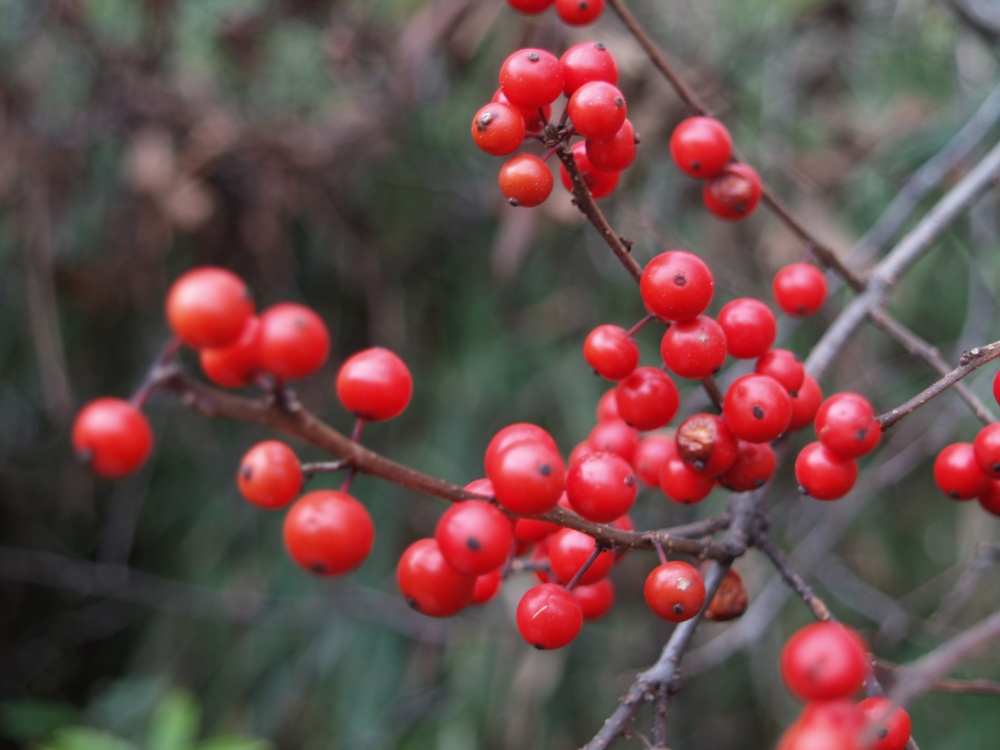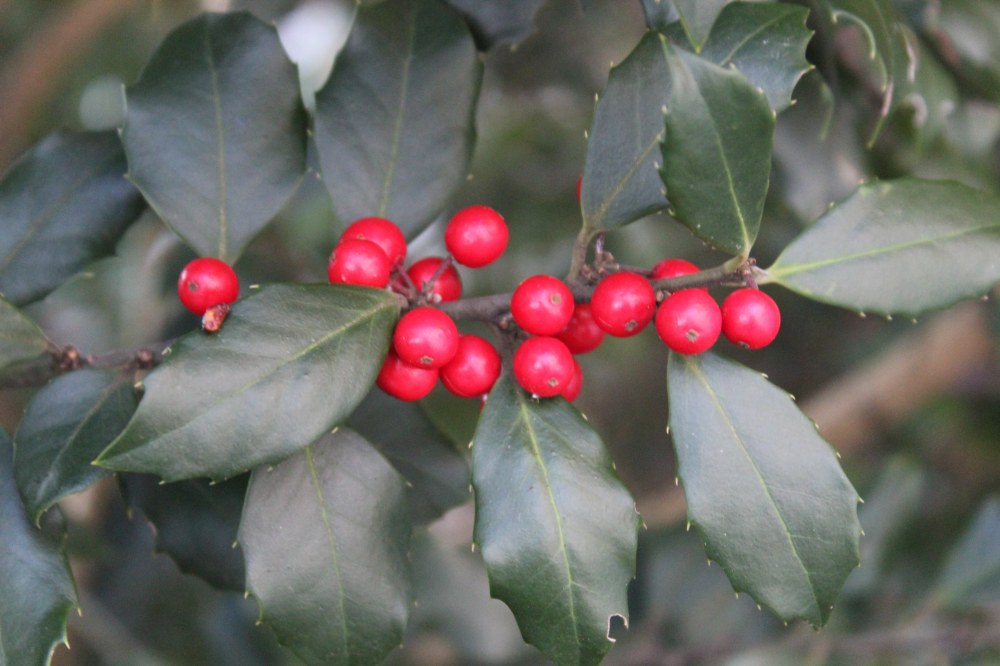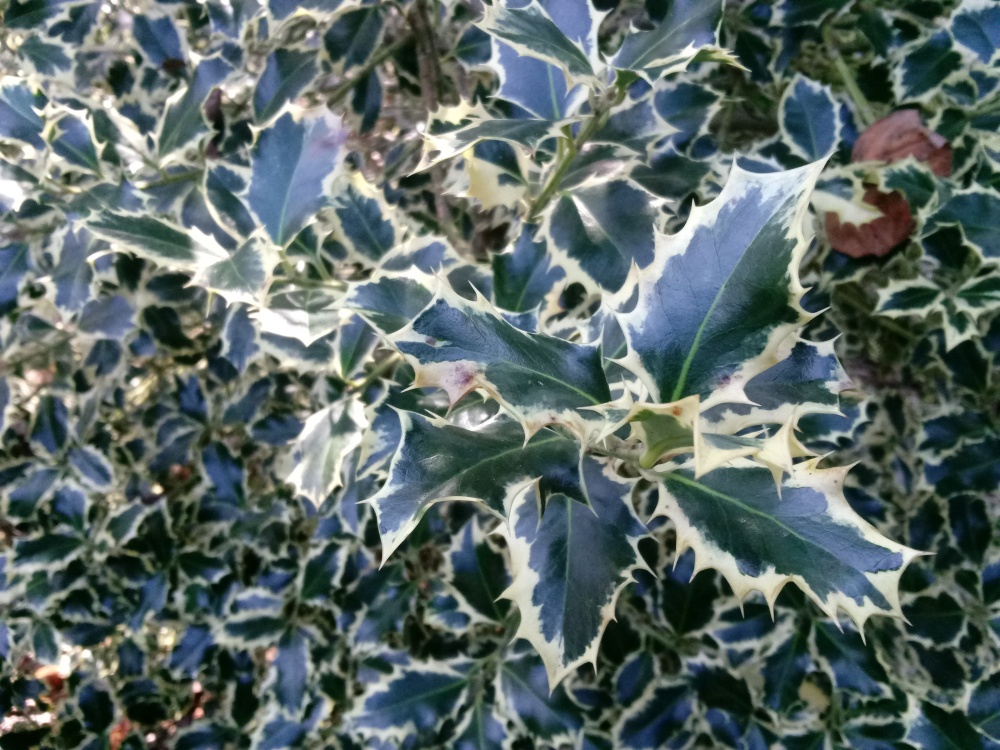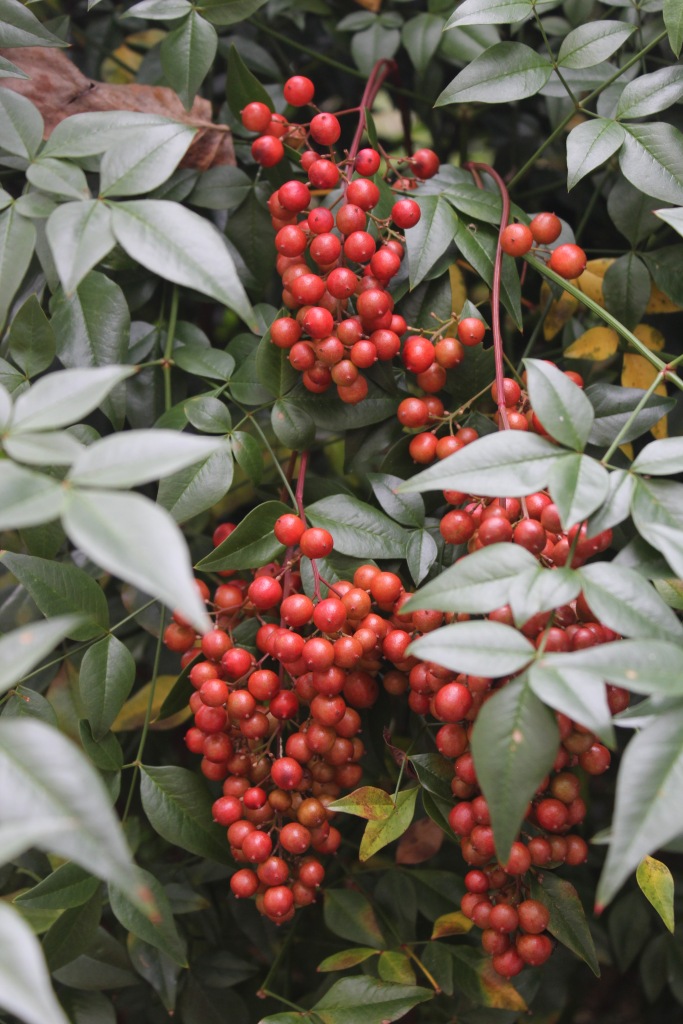I prefer plants that require little thinking, ones that do what’s expected without a fuss. There’s more than enough to think about with sunlight exposures and drainage. If I have to consider who’s a male or female, or where a pollinator will come from (if a separate one is needed), I’m in trouble.
While most hollies consistently bear heavy crops of berries, a few don’t, and in the case of a clump of winterberry hollies, I was confounded that the once heavy crop of berries diminished annually until recent years, when there were none. The resolution was several years in the doing as I was slow to notice, then negligent in planting a male after I traced the problem to removal of the pollinator when a grove of bamboo overwhelmed one end of the holly grouping.
Happily, a male winterberry holly (Ilex verticillata ‘Apollo’) planted in spring just as female hollies were flowering had the desired effect. With smaller and more scattered berries, ‘Sparkleberry’ is likely not the best of the winterberries, but these were planted years ago, so there’s no changing at this point. Now, with ‘Apollo’ nearby, at least there are berries again.


Heavy crops of berries are expected on most of the garden’s hollies without having to consider where the pollination is coming from. Perhaps some are pollinated by American hollies (Ilex opaca) that are native to the neighboring forest (and one tall seedling in the garden), or by other hollies that have both male and female flowers (monoecious). As long as there are berries, I don’t need to think about who’s pollinating who.


At least mildly disappointing is the variegated English holly, which has never had a berry. It’s foliage is reason enough to include it in the garden, but the holly would be more splendid with red berries tucked between the distinctive variegated leaves. There is no male English holly in the garden, and without space enough, there probably never will be. Other hollies should be potential pollinators, but the timing of flowering must be wrong, or something, and as it is I don’t have much hope that I’ll ever see berries.

There are more bunches of berries in the garden, and while bitter tasting berries of nandinas (Nandina domestica) are rarely eaten by birds, the abundant berries make it clear that bees are attracted to the flowers. Nandina is often included on lists of invasive plants, but I’ve seen nothing of the sort in the garden or in the neighboring forest. Yes, a few seedlings pop up within a foot or two of the clumps, but this is as far as the seeds can roll. To become a pest, birds would have to eat and distribute the seeds. I see a few robins peck at the berries in late winter, but they don’t appear to eat more than a few, so by winter’s end most berries remain.
Nandinas are definitely invasive in my garden!
Certainly, I hear reports from areas where nandina is said to be invasive. I monitor surroundings carefully for seedlings of nandinas and other plants, and I see no nandina seedlings anywhere in the garden except directly beneath the plants. The forest that borders the garden has scattered invasives, burning bush and multiflora rose, but few enough that I haven’t felt the need to chop them out.
It’s easy to overlook Hollies for most of the year but they really do put on a show at this time. I’m on the lookout for a few more to hold some more winter interest in my garden.